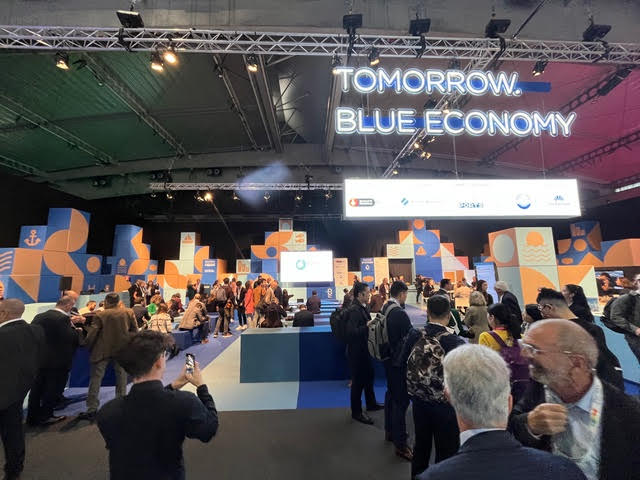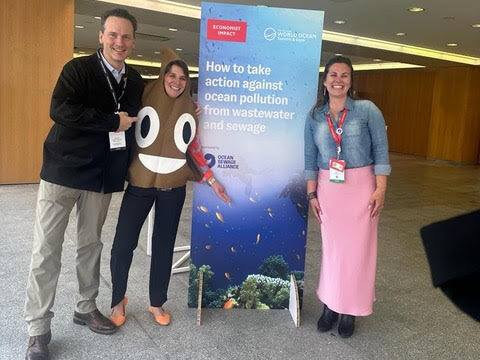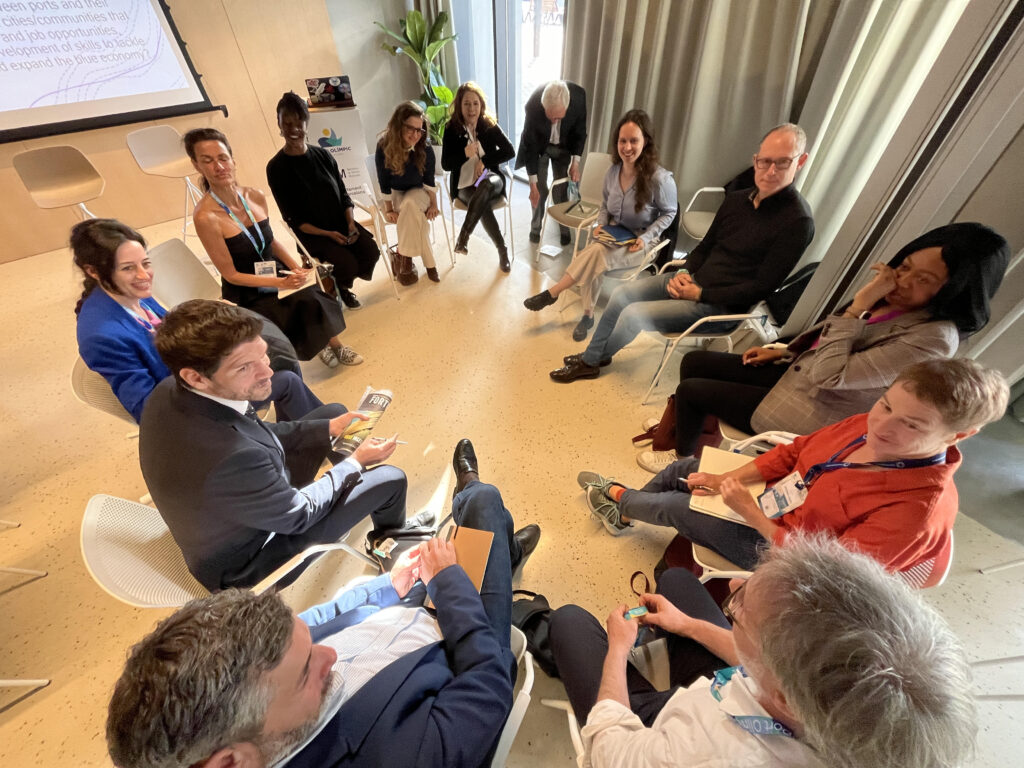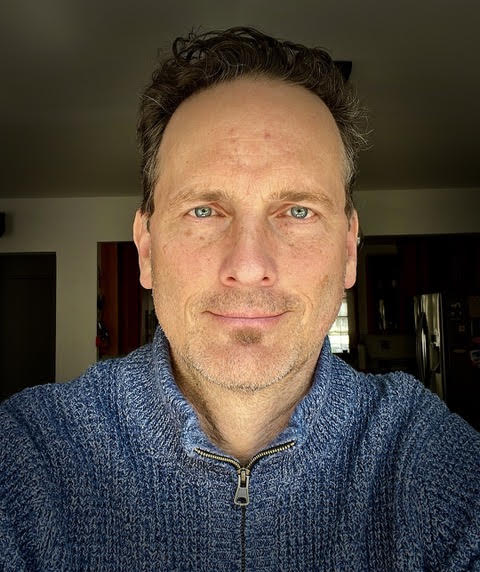For many, the ocean can often appear to be so vast, so untouchable, so unseen, that it’s hard to imagine we can do it any harm. Sadly, that sense of invincibility and “out of sight, out of mind” has caused true damage to our primarily ocean planet – sometimes starting in river and inland lake locations, far from the briny deep. Given how little we actually have explored, studied and documented – and the difficulty of doing so – let alone what the average person can access, it is no surprise that I so often see surprise when I count the many ways we must protect, preserve and regenerate our main, and very blue, planetary system.
So, while it might be daunting to push the movement and measures to protect, preserve and regenerate the ocean and blue systems, when someone asks what gives me hope, one of my first answers is partnerships and collaborations.


First things first – when I say partnerships and collaborations, they can have a wide range of typologies – short to long term, informal to formal, temporary or more permanent, sectoral to cross-sectoral, etc – but what is important about their work is the intention(s), impact(s) and value(s) that bring the various partners together. It is not partnership for partnership’s sake or to trade logos. It is premeditated success through real collaboration.
The ocean and the global hydrological system(s) ARE vast and complex. Therefore, we need to mirror those complexities, intersections and the expansive size by working in partnership. It is no coincidence that the final UN Sustainable Development Goal, number 17, is focused on partnerships!
I have been fortunate to be in roles that were focused on partnerships to combine forces and drive impact, speed and efficiency. That is particularly important for the ocean and its contributing waterways as we tackle the present and looming shocks and stresses .My present role as Managing Director at the World Ocean Council is a prime example, as we seek to bring together multi-sector organizations across a wide and inclusive spectrum of industry and link to science, research, education and policy along with key partners from the public and private sector. We have members and partners that range from innovative blue tech startups to global giants in the maritime and ocean space, all working towards the same goals for ocean sustainability, blue and green finance, blue economy, coastal resilience and more.

Another great example that I first joined as a vetted member/partner, is the Ocean Sewage Alliance, where, again, we work at the intersections of partners and themes to tackle the scurge of sewage and wastewater in all bodies of water on the planet. When I was acting ED at Ocean Sewage Alliance I often referred to those intersections as “compass points”, connecting sewage and wastewater with other pollution typologies (plastics, forever chemicals, acidification, agriculture/pesticides, etc) making us more efficient and impactful. Partnering with others and aligning strategies brings the work further and faster along.
The list of powerful and successful ocean and water partnerships is long. I am involved with other collaborations and networks, like the Global Island Partnership and the Center for Ocean Policy and Economics at Northeast Maritime Institute, as well as burgeoning collaborations of smaller scales and of a more informal nature. But if we are going to meet our goals for the ocean and water, there a need for more coordination, less duplication, more speed, efficiency and diversity.
In the end, I have seen the benefits and best practices flourish when we blend organizations, themes and topics, when we unite for partnership across sectors, whether it is biodiversity and blue economy or city, corporate and coastal resilience. The Ocean Decade is half way through, but there is still time to double down on collaboration, solutions and scaling to meet the vastness and complexity of our ocean planet.

Stewart Sarkozy-Banoczy is the Managing Director for the World Ocean Council and co-founder/ocean lead for Okhtapus, a start up “blue” replication platform to support innovative solutions and project enablers to connect with financing . Stewart is the founder of Precovery Labs, where creativity and community drive impact and awareness for clients like RISE- Coastal Resilience Innovations, Ocean Conservancy, Opportunity Finance Network, NDN Fund/Collective, and Conservatoire d’Littoral. Through Precovery Labs, he is also an active professional documentary and fine art photographer, visualizing stories of change and impact.



